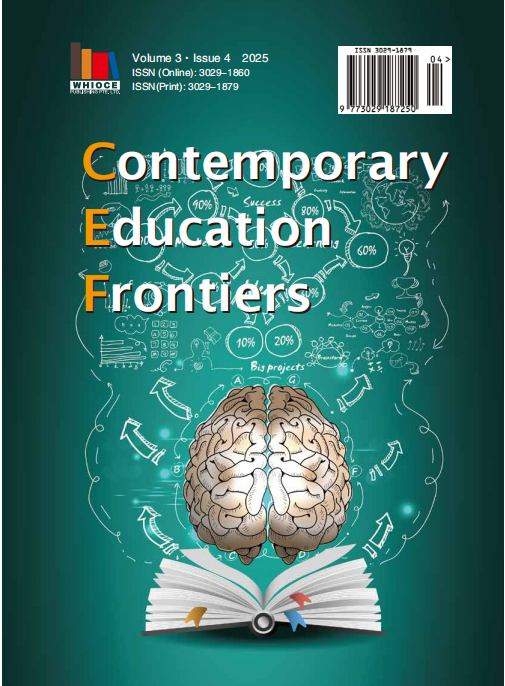The Difference of Simple Neural Networks in Testing Penetration Speed
DOI:
https://doi.org/10.18063/cef.v3i4.1055Keywords:
Neural networks, Machine learning, Penetration, Ballistic limit velocityAbstract
Aiming at the difference of different networks in the penetration problem, the paper starts from the precision, time and so on. Comparison of deep neural networks (DNN), Decision Trees, Ran Dom Forests, XGBoost, and Support vector machine (SVM), shows that different networks are different in predicting the ballistic limit of ball penetration. The test results show that the predictive value of the decision tree is 0.01 higher than that of the depth neural network (DNN), but the use time is much longer than that of DNN. The predictions were 0.05 higher when compared with a deep neural network (DNN) using Random Forests, and the predictions were not evenly distributed but the usage time was much lower. When comparing SVM with DNN, the predicted value is 0.0.9 higher, but the Support vector machine time is much less, and the predicted value distribution is even and curvilinear. The predicted values were found to be 0.09 higher when compared with deep neural network (DNN) using XGBoost, but were much lower with the use of specimens (DNN) and the predicted values were unevenly distributed.
References
Zhang Haoyu, Zhang Shukai, Cheng Li, Li Yuan, Wen Yuquan, and Zhang Zhengwei. Effects of Detonation Methods on Ground Target Damage and Explosive Power in Anti-Personnel Explosive Combat Units [J]. Journal of Ordnance Science, 2021,42(11):2300-2309
Wenhe Ming. Empirical formula for impact response of concrete target plate [J]. Explosion and Impact, 2003,23(3):267-274
XIA Y. Research on statistical machine translation model based on deep neural network[J]. Computing,2020,102(2): 643 - 661.
RYAN S, KANDANAARACHCHI S, SMITH-MILES K. Support vector machines for characterizing Whipple shield performance [J]. Procedia Engineering, 2015, 103: 522 - 529.
WANG Z, WANG X Z. A deep stochastic weight assignment network and its application to chess playing[J]. Journal of Parallel and Distributed Computing, 2018, 117: 205 - 211.
RYAN S, KANDANAARACHCHI S, SMITH-MILES K. Support vector machines for characterizing Whipple shield performance [J]. Procedia Engineering, 2015, 103: 522 - 529.
Li Jinfu, Zhi Xiaoqi, Fan Xinghua. Study on the penetration characteristics of tungsten balls and hexagonal tungsten column fragments into Q235 laminated targets [J]. Journal of Artillery Launching and Control, 2021,42(2):28-33,39.
RYAN S, THALER S. Artificial neural networks for characterizing Whipple shield performance [J]. International Journal of Impact Engineering, 2013, 58: 31 - 38.
Zhang Shuai. Numerical simulation analysis of projectile penetration through reinforced concrete multi-storey target panels [D]. Nanjing: Nanjing University of Science and Technology, 2017.
Wang Shuo and Shi Quan. Perforation damage pattern recognition based on artificial neural network [J]. Journal of Sichuan Ordnance Science, 2017,38(10):60-64.
Li Jiangguang, Li Yongchi, Wang Yulan. Application of artificial neural network in deep penetration of projectile through concrete [J]. Engineering Science of China, 2007,9(8):77-81.
Yang Jiang, Zhang Lei, Wang Jimin et al., Prediction of concrete penetration depth based on data fusion [J]. Journal of Armament Materials Science and Engineering, 2020,43(4):40-45.
Zhang Lei, Wu Hao, Zhao Qiang et al. Calculation method of damage effect on underground engineering targets based on data mining technology [J]. Explosion and Impact, 2021,41(3):4-13.
Fang Anqi and Li Rong. Data-enhanced neural network method for accurate layer recognition of penetration fuses [J]. Journal of Detection and Control, 2022,44(1):1-6.
Lei Yingjie, Zhang Shanwen. MATLAB Genetic Algorithm Toolbox and Application [M]. Xi 'an: Xidian University Press, 2014.
Zhang Haoyu, Zhang Shukai, Cheng Li et al. Effect of detonation modes on ground target lethality in explosive ordnance systems [J]. Journal of Military Science, 2021,42(11):2300-2309.
GOLSDMITH W, FINNEGAN S A. Penetration and perforation processes in metal targets at and above ballistic velocities [ J]. International Journal of Mechanical Sciences, 1971, 13 ( 10 ): 843 - 866.
Tan Duowang, Li Xiang, Wen Dianying et al. Experimental study on terminal ballistic performance of spherical tungsten alloy fragments [J]. Explosion and Impact, 2003,23(5):425-429.
Xu Yuxin. Research on several problems of fragmentation injury effect [D]. Beijing: Beijing Institute of Technology, 2012.
Liu Tielei, Xu Yuxin, Wang Xiaofeng et al. Calculation model for ballistic limit velocity of tungsten alloy spherical fragments penetrating low carbon steel [J]. Journal of Military Engineering, 2022,43(4):768-779.

